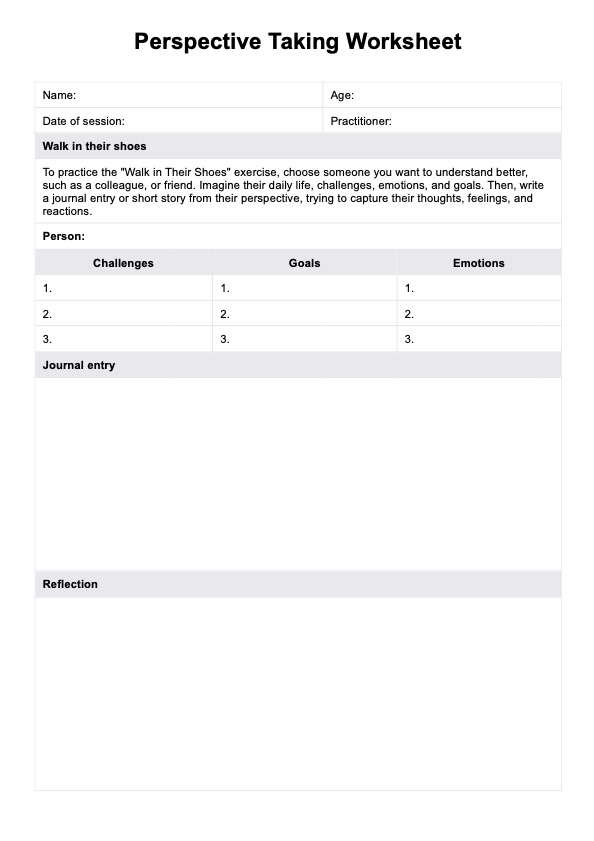Using literature and storytelling. Literature and storytelling provide excellent opportunities for teaching perspective-taking. Read books that explore different perspectives and discuss them with your students. Encourage students to analyze characters' motivations, thoughts, and feelings.

Perspective Taking Worksheet
Empathy in healthcare is essential. Utilize this customizable worksheet to foster collaboration between you and the client and upskill you as a professional.
Use Template
Perspective Taking Worksheet Template
Commonly asked questions
Perspective-taking is one of the first steps to relating to another person or student's life experiences, as it enables students to recognize that others can have different thoughts, feelings, and knowledge.
Conceptual perspective-taking allows one to better understand the reason behind another person's actions. This also helps one engage in conversations about complex social skills in an acceptable and friendly way.
EHR and practice management software
Get started for free
*No credit card required
Free
$0/usd
Unlimited clients
Telehealth
1GB of storage
Client portal text
Automated billing and online payments











